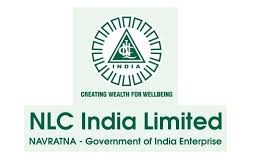
India is on track to install more than 10GW of renewables per year from 2017 as large-scale renewables, rooftop solar and off-grid sectors show impressive growth
Source : BNEF
New Delhi, London, New York and Shanghai, 1 November 2016 – India has now got the third biggest power sector in the world after China and the US. As economic growth continues and population rises, it faces the triple challenge of meeting growing demand, cutting pollution and offering modern energy to more than 300m people not connected to the power grid.
Financing India’s Clean Energy Transition, published today, examines the recent growth across the country’s off-grid, small energy grids, rooftop solar and utility-scale renewable energy segments and looks at challenges in their future growth including financing trends.
Total annual investments in utility-scale projects crossed the $10bn mark last year. The Indian government’s ‘175GW renewables by 2022′ target includes 135GW of utility-scale projects. This implies that cumulative capacity would have to increase more than three times between 2016 and 2022, from 39GW in 2015 to 135GW, requiring investment of nearly $100bn (an average $14bn/year).
Indian project developers are trying to meet this capital requirement through various means, including increasing borrowings from multilateral organisations and issuing green/masala bonds. While Securities and Exchange Board of India is still finalising the modalities for the formation of quoted infrastructure investment trusts (similar to US yieldcos), Indian renewable energy developers are already planning to list assets adding up to $1.3bn under this mechanism.
Ashish Sethia, head of APAC power and gas markets at Bloomberg New Energy Finance, said: “Reaching $10bn yearly investment was a significant event, and so was the issuance of the first green bonds. The next one to watch out for on India’s clean energy journey would be the listing of infrastructure investment trusts.”
The small and rooftop solar sector will need another $50bn to meet its own ’40GW by 2022 target’. Rooftop solar in particular has become the fastest growing renewable power sub-segment in India’s clean energy market. Starting from a small base, annual installations have increased by nearly three times (from 72MW to 227MW) in the past three financial years and this trend is expected to continue.
The cost of electricity from new rooftop projects is falling, and now lies between $69 and 92 per megawatt-hour. Lower and lower costs are driving market growth. Shantanu Jaiswal, lead India analyst at Bloomberg New Energy Finance, said that rooftop solar power costs are “now competitive with tariffs paid by industrial and commercial consumers and often comparable to average residential electricity rates”. The main challenges in scaling up small and rooftop solar installations are awareness about achieving immediate economic benefits and access to loans without collateral.
Jaiswal said: “Prime Minister Narendra Modi has a vision to provide 24×7 electricity to every person in India and one way to achieve 100% electrification is to make use of off-grid power. This is not only quicker than building a conventional grid through remote and sparsely populated areas but also defers the investments needed to build transmission infrastructure.”
Solar lanterns and home systems are often the first step on the energy ladder for people not connected to the grid. The report found that the annual sales of such devices has increased by an average of 47% per year, and this helped to provide electricity to 91,000 households during the financial years 2013 to 2016 (April 2012 to March 2016).
Subsequent increases in power demand in off-grid areas can be met by small renewable grids. These started to provide 76,000 rural households with scheduled power in FY2013-16. The government wants to scale-up the cumulative small energy grid capacity to 500MW by 2021, but it needs to address a few challenges in order to achieve that – starting with what happens to the small grid when the power distribution utility expands into the same area. Small energy grids can help unlock the commercial potential of micro enterprises in rural India. Once people have their own solar devices or off-grid power they need not rely on low-quality and polluting alternatives such as kerosene or candles, and unreliable grid electricity.
Bloomberg New Energy Finance was commissioned by The David and Lucile Packard Foundation to research and write this report. The content and conclusions are those of Bloomberg New Energy Finance alone, based on its own independent analysis. Rooftop solar and off-grid market conclusions in this report are based on surveys and interactions with more than 50 organizations active in this industry.















